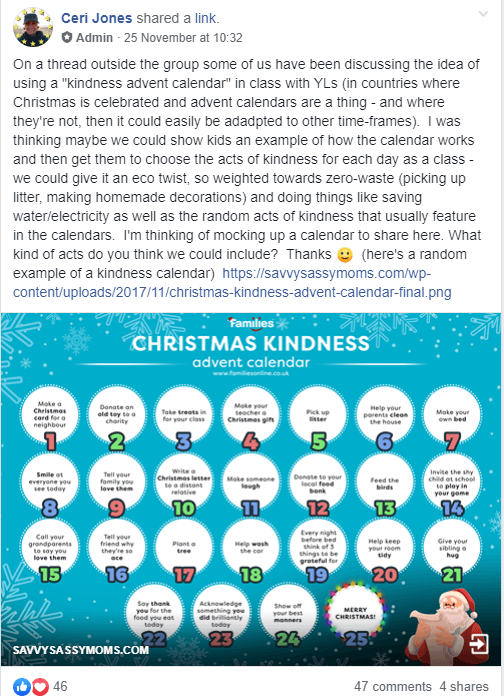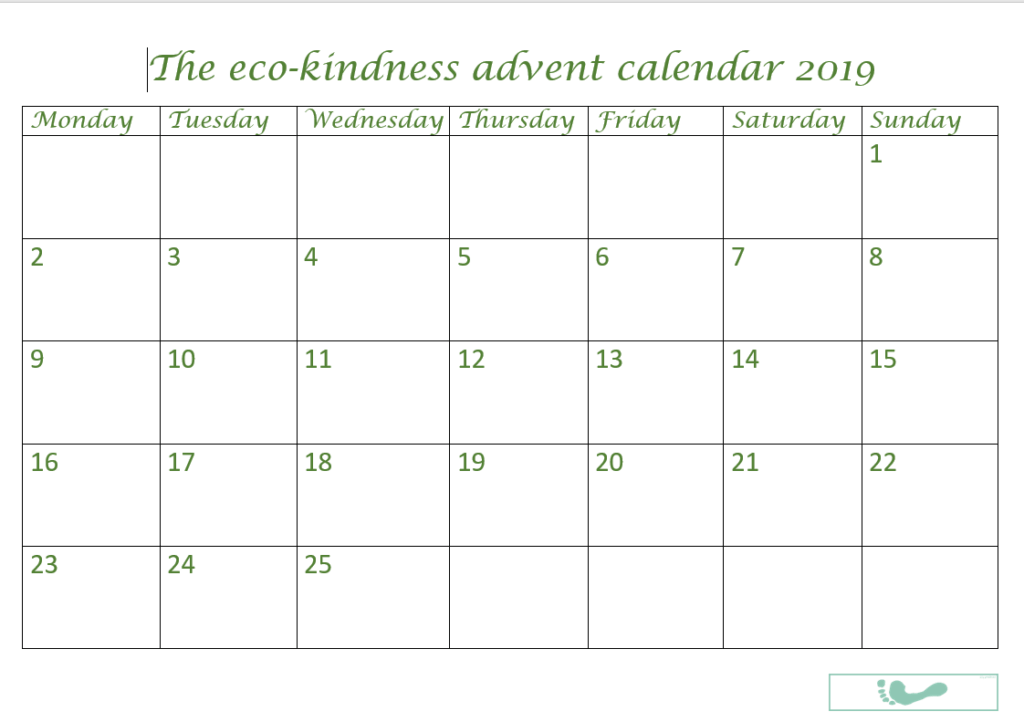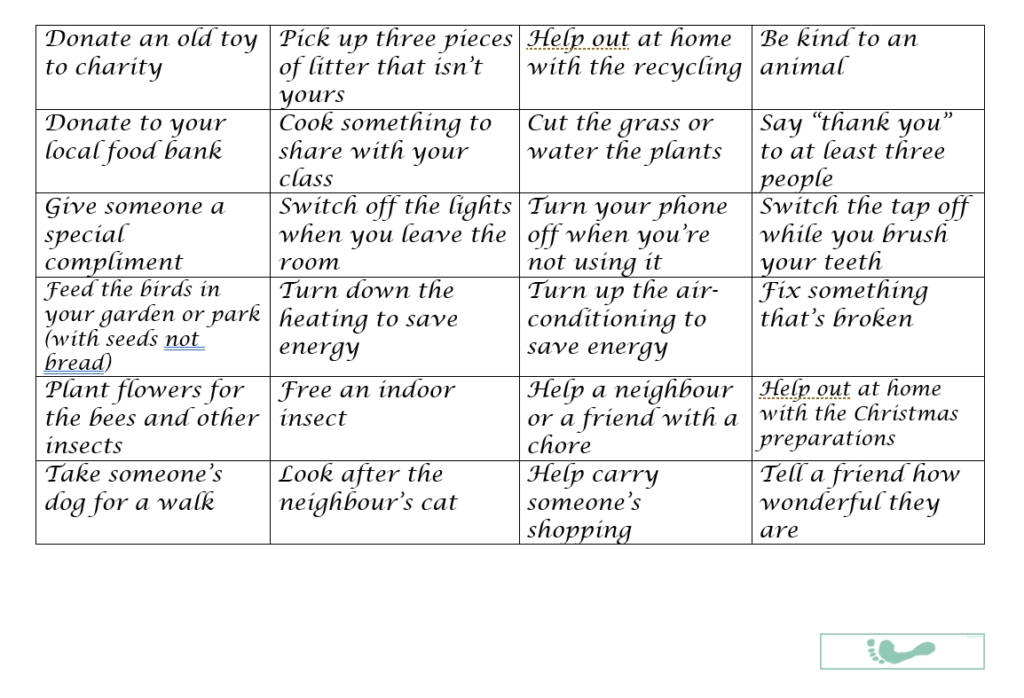
As you can see from the number of comments and likes, it did capture quite a bit of attention and together we worked towards creating our own ELT Footprint version of the calendar. It’s a very simple thing. A blank calendar with the dates running up to Christmas 2019 (because the initial discussion started in Spain, and because it our context, advent is the natural time-frame).

The dates can change. They could run up to the last day of school for example. They could just be the days of the school week and not include the weekends, they could just be the days you see your class. Whatever works for you. Likewise, it doesn’t have to be an advent calendar. It could work easily well for Ramadan, with its culture of good deeds and giving to charity, Hanukkah with its emphasis on sharing and doing good, or Nowruz with its message of hope and renewal. It doesn’t need to be tied to a specific date or celebration either. It could be a holiday task sheet, for use any time of year, or for a month-long project to bring a new routine into class. Basically, you can make of it what you want!
The initial calendars are already full of suggestions for random acts of kindness, and our Facebook discussion kicked off with a critique of some of the suggestions in the example I shared. Tweaks and rewordings were suggested and we worked towards creating a whole new set of good deeds, ones that would fit the various different contexts we all live and work in. My initial idea had not been to maybe use the sample I shared as a starting point and to get students to edit it, but as the discussion continued the idea matured into creating a blank calendar and a set of cards with possible suggestions that the students could use or not.
Here’s a taster of the cards:

All the suggestions on the cards come from the contributions to the Facebook conversation. There are two pages of cards and 48 cards in total. The idea being to supply way more than is necessary to fill the calendar, so students can choose the ones they like best, or that they think are realistic. Of course, they can also come up with their own. So, how might we go about using it in class? This is just one suggestion – there are obviously so many different ways possible. So, I’m sticking to my context and going with the calendar as is, and this is what I’d do:
- Show my class an example of a kindness calendar and talk about what it is and the idea behind.
- Present a poster-sized version to the class. Explain that we’re going to create our own calendar.
- Give the students copies of the cards (I would cut these up and distribute them to groups around the class) and ask them to decide which ones they think are possible for them. (Watering plants and planting flowers might not be something my students feel they can do, or they may not have control over how they get to school).
- Collect in the “impossible” tasks and then ask the students to choose which ones they like/think are a good idea. At this point share the “possible” cards with the whole class so everyone knows what’s left. This is also a chance for more tasks to be discarded if someone from one of the other groups thinks they might not be realistic.
- Ask the groups to come up with more good deeds and write them on blank cards. Then spread all the cards out on the floor (or stick/pin them to the board). The time has come to choose which task goes where. If you have too few cards then maybe some days can be left empty and students can come up with their own later. If you have too many, then maybe some days can have more than one, and the students can choose which they prefer to do when it gets to that day.
- Stick the cards on the poster. The students can do this, taking it in turns to choose a card and put it in its place. In the meantime, the students make a note of the deeds coming up over the next few days. (You could also give students the possibility to colour or draw on the cards to make the calendar more eyecatching/personalized).
- Discuss how you’re going to use the calendar. Field ideas from the students. Maybe at the beginning of each lesson the students can tell you which actions they were able to do since the last lesson. Maybe they can add stars or simple drawings on the calendar. Maybe they can turn the cards over and add a drawing on the back. There are lots of possibilities and your students are bound to come up with more! I’d try and make sure it fitted in comfortably with our other classroom routines and added value to the classes rather than taking time away.
This, of course, is only one way to use it. You could build up the calendar by adding new cards each lesson so that it grows with time. You could make a vertical calendar with the deeds in a column and students could add stars or tiny drawings to the right row each time they do one of the good deeds. The line of drawings/stars would show which deeds were more popular. I’m sure you can think of lots more ways to adapt the idea! Why not add them here in the comments, or come on over to the Facebook group and share them there. Click here to download a Word document with the blank calendar and cards. We’re sharing it as a Word doc so you can edit and adapt it to suit your context.
I’d like to say a big thank you to all the following ELT Footprinters for their contributions to the conversation and to the calendar (in chronological order) :
- Simon Pearlman (for kicking it all off)
- Daniel Barber
- Kate Cory-Wright
- Linda Yael
- Jill Hadfield
- Katherine Bilsborough
- Lisa M M Horvath
- Carol Rainbow
- Noni Gilbert
- Natalie Rose Howarth
- Judie Hudson
- Sarah Mercer
- John Jo
- Patrick Jackson
- Nergiz Kern

